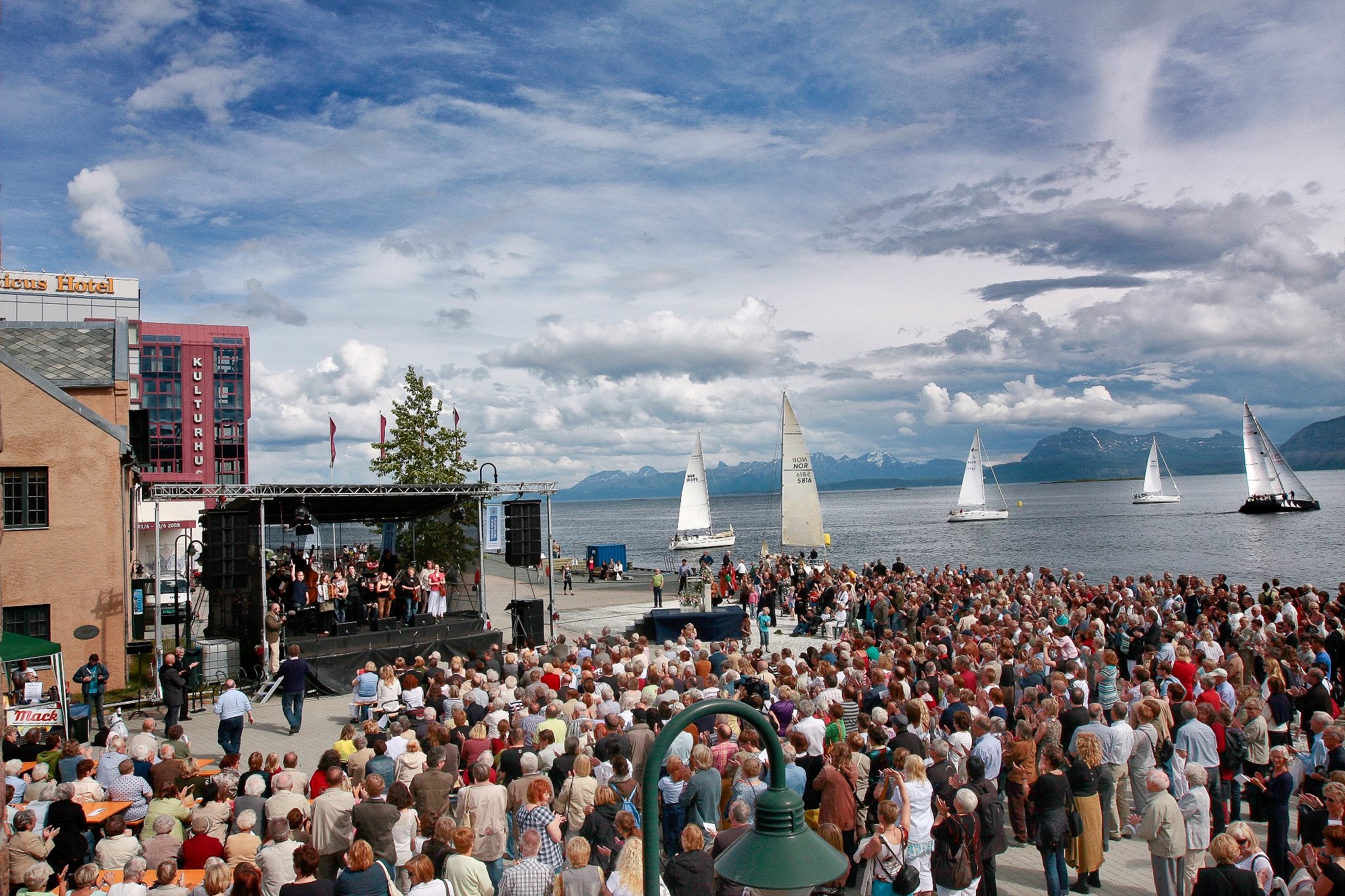In Arctic Norway, a culture festival aims to give the North a voice of its own
The Arctic has long attracted the south’s gaze. Now, the region’s artists want it to lend its ears.
When Maria Utsi assumed responsibility for Festspillene i Nord-Norge, an annual cultural event in Harstad, Norway, it was, like much else in the region, orientated towards the south.
“For 50 years, the festival looked towards Oslo, and to Europe for our audience,” Utsi says. Doing so has made good commercial sense: 30,000 people now visit Harstad (pop. 25,000) for the eight-day event, which begins on June 24.

Culturally, however, Utsi felt something was lacking. With an increasing southern focus on the region’s resources and its strategic importance, she felt the time had come for artists from other parts the region to take on a more prominent role.
“The aim of the festival is to strengthen the relevance of art and culture in society,” she says. “During the past two years, we’ve sought to do that by recalibrating towards the North. Artistically, the focus now is on collaboration within the region.”
Bringing artists from each of the eight Arctic countries together in one place, she believes, gives them the chance to come up with new ways to express themselves. Equally important is its contribution towards forging an identity that is independent of southern interests.
“The people who live here can use art and culture to express things that aren’t always seen or heard outside the region,” Utsi says.
Arctic art and culture, like any art and culture, are preoccupied with shedding light on basic questions: what is the Arctic? What do the people who live there we want to do with it?
What might surprise the southern audience is that there is seldom an either-or answer to many of the region’s questions; people in Alaska, for example, can be in favour of conservation and industrialization. More than one thing can be true at the same time.
That, according to Daniel Chartier, an academic at the Université du Québec, reflects the human perspective that southern interests continue to overlook when considering the North.
“In any understanding of the North and the Arctic, the variety of cultural and human aspects must be considered, even though these have been marginalised by Western tradition,” Chartier wrote in a commentary published by several Northern news outlets in connection with the Arctic Arts Summit, a two-day event that will precede the festival.
Starting on June 21, the gathering will give artists from different countries the chance to establish what organisers call “operational networks” that will lead to collaborative art and culture projects.
Another, more practical, aim of the Arctic Arts Summit is to discuss how the region can use its art and culture in more tangible ways. The most obvious is to include the creative industries alongside the extractive ones when coming up with development policies for the region. Another is to use art and culture to oppose the stream of information that depicts the North in a southern perspective.
“The Arctic,” Chartier argues, “must be able to define itself as an idea by itself.”
Kevin McGwin is the former editor of The Arctic Journal. He is covering Arctic Arts Summit and Festspillene i Nord-Norge at the invitation of the organizers.